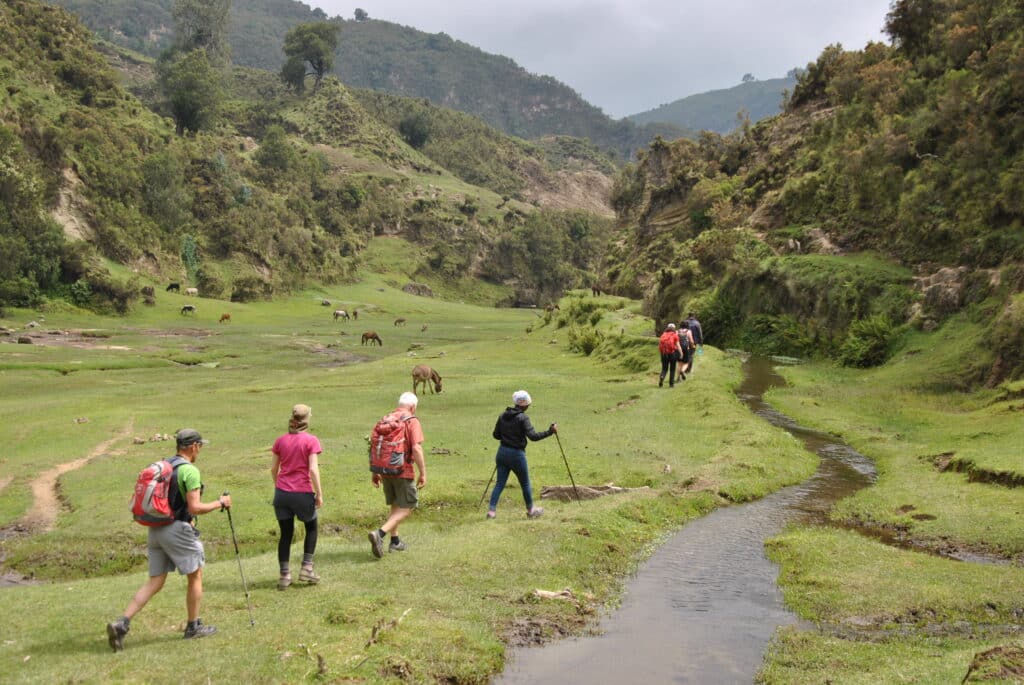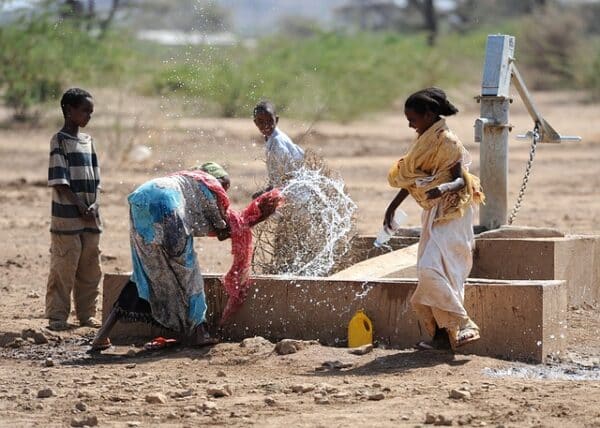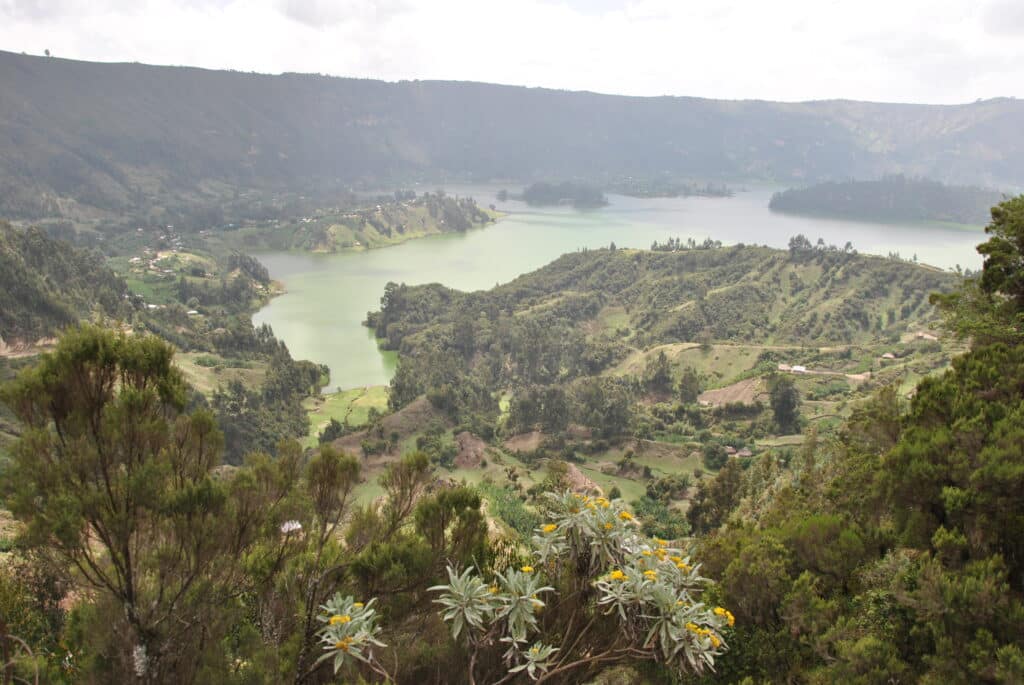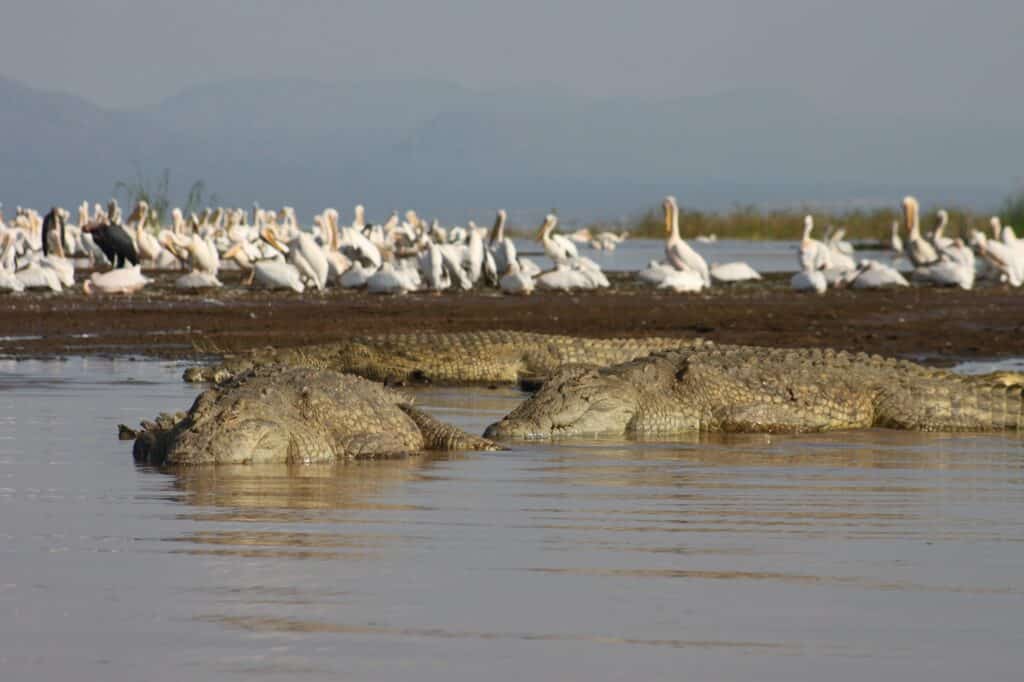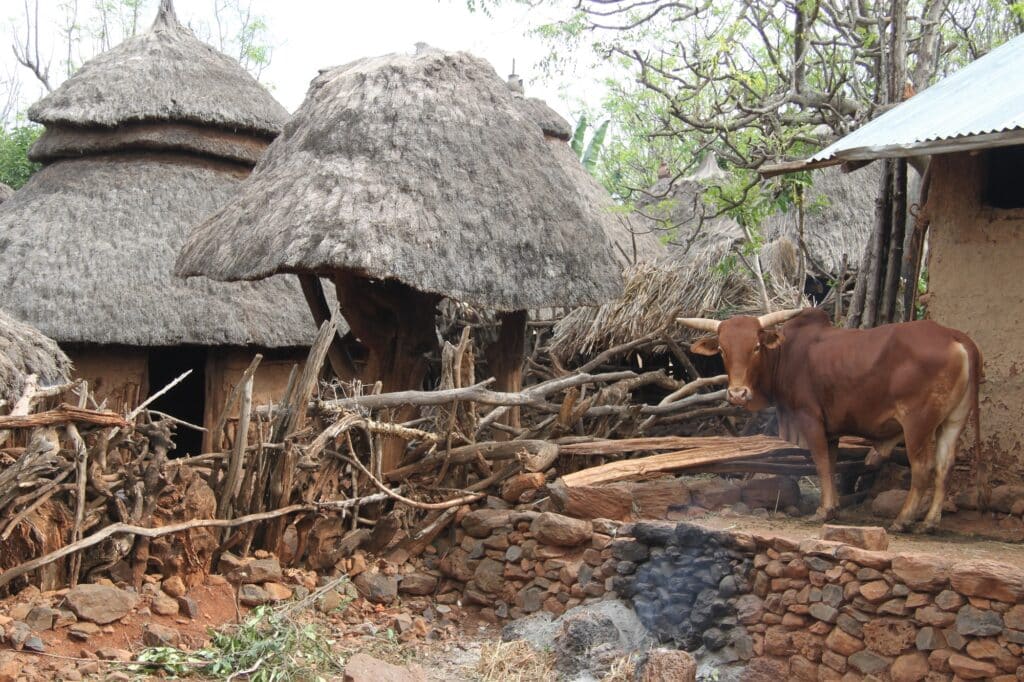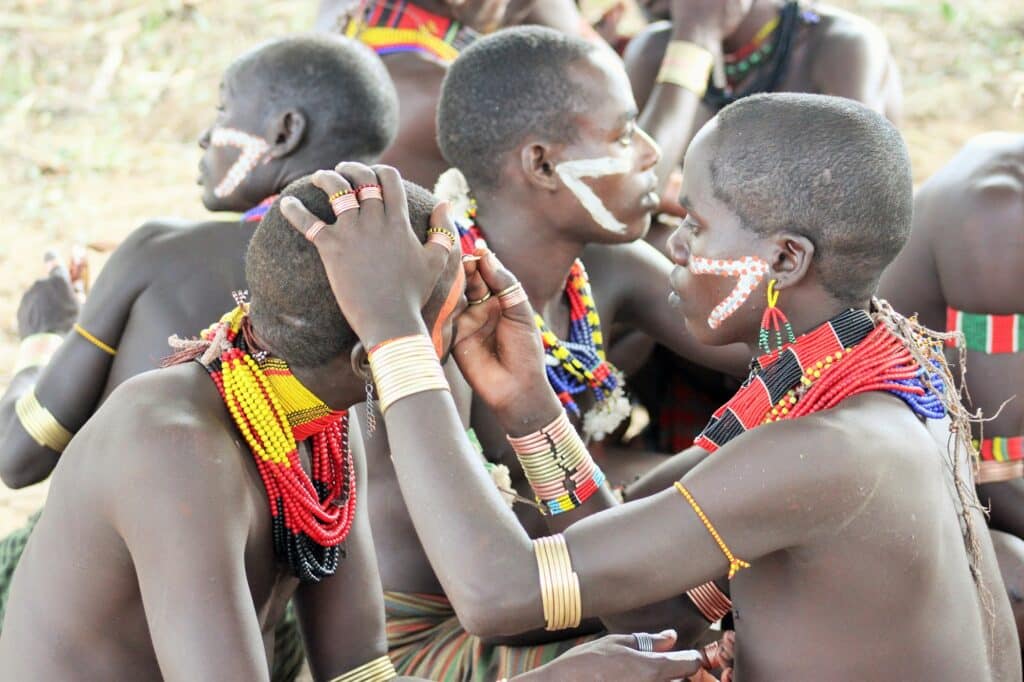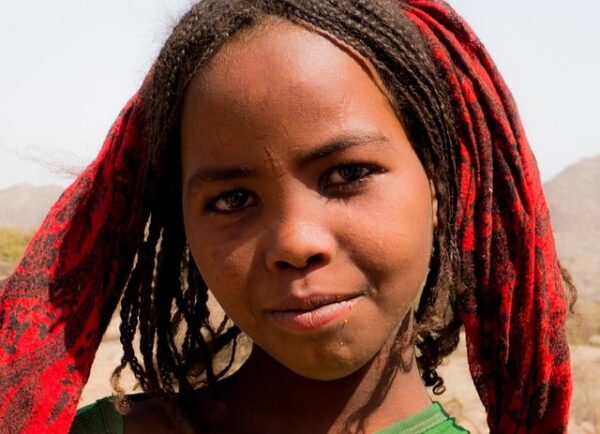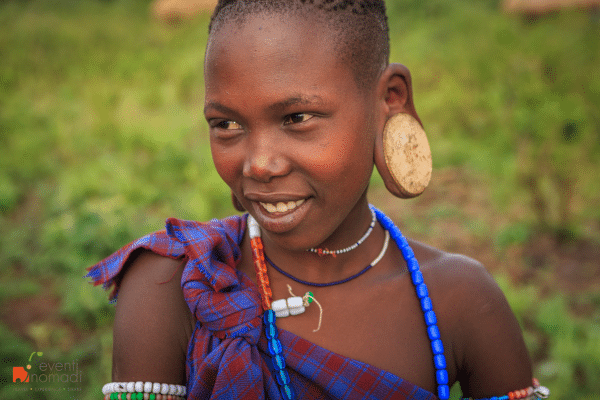Day 1: Arrival in Addis Ababa
Arrive at Addis Ababa airport and transfer to the hotel. City tour that includes the National Museum where several archaeological finds are preserved including fossils and hominids such as Lucy’s skeleton; visit to markets and walk on Entoto with impressive views of the capital. Free time in the afternoon. Dinner and overnight stay at the hotel.
Meals: dinner.
Overnight stay: The Hub Hotel
Day 2: Addis Ababa – Jinka
Transfer to the airport on time for the domestic flight to Jinka in the Omo Valley. Meet with the Ari tribe, who live not far north of Jinka. We first drive north to Gazer, from there we take a small road uphill into the highlands to Woset. Here begins our 2-3 hour hike through the green hilly landscape. We visit a waterfall and some villages of the Ari ethnic group. After the hike, we return to Jinka for dinner and overnight stay.
Meals: breakfast, lunch, dinner.
Overnight stay: Eco Omo Resort
Trekking: 9.5 km, 2-3 hours | elevation gain m. 700/-700
Difficulty: medium
Day 3: Jinka – Alduba – Dimeka – Lala – Buska Mountains
We leave Jinka to head toward Turmi. On the way, we make a stop in Alduba to visit the weekly market frequented by local traders of various ethnicities. The Hamar live here, in addition to the Dimeka and Turmi. Like most pastoral groups in the region, they live mainly off their herds (milk, meat, blood) and, in the rainy season, cultivated millet and other agricultural products. Cattle and goats are a livelihood and status symbol for the people. From Dimeka, where we stop for lunch, we continue about 30 kilometers to Lale, from where we continue to Buska where we set up our first tented camp. We also have the opportunity to visit the Buska forest. Dinner and overnight stay in the camp.
Meals: breakfast, lunch, dinner
Overnight: Camp Buska
Trekking: 13 km, 3-4 hours | elevation gain m. 850/-500
Difficulty: medium
Day 4: Buska Mountains
Today is our first full day of hiking. After breakfast, we head briefly west to a pass from which there is a splendid panoramic view of the hilly landscape and hike south. The area is sparsely populated, but we still encounter the villages and camps of the Hamer people. While the women do mainly agricultural work, the men generally work as herders. Instead of coffee, the Hamar drink a tea-like brew made from the pods of coffee beans. In the afternoon we reach Kufri, on a plateau, where we will pitch our next tent. Dinner and overnight stay in the camp.
Meals: breakfast, lunch, dinner
Overnight:Camp Kufri
Trekking: 5 hours | elevation gain m. 500/-650
Difficulty: medium
Day 5: Turmi
After breakfast, we pack our backpacks as usual. We always walk with a light backpack, while larger luggage and camping and cooking equipment are carried by pack animals. Today we leave the area around Kufri village and descend into a valley. We head southwest across the riverbed until we reach a road near Dega Keja, where vehicles are waiting for us. After loading our luggage, we drive just over 20 kilometers to Turmi, to Buska Lodge, for a well-deserved shower. Note on the drive to Turmi: In case of unexpected heavy rains, we may use motorcycles instead of our usual four-wheel-drive vehicles to cross a riverbed.
Dinner and overnight at the lodge.
Meals: breakfast, lunch, dinner.
Overnight stay: Buska Lodge
Trekking: 11.5 km, 3 hours | m. 150/-450
Difficulty: medium-low
Day 6: Turmi – Konso – Arba Minch
Breakfast at the lodge and depart for Arba Minch. On the way there is a stop to visit a typical Konso village. The Konso are famous for their terraced fields supported by stone walls and their wooden burial stelae. Their villages have a fixed structure in which a communal house for unmarried men forms the core. Continuation of the journey in the afternoon. The town of Arba Minch (“Forty Springs”) is nestled between the two lakes Chamo and Abaja. The latter, at 1160 km2, is the largest lake in the Ethiopian part of the Rift Valley. Dinner and overnight stay at the lodge.
Meals: breakfast, lunch, dinner.
Overnight stay: Paradise Lodge
Day 7: Arba Minch – Lake Charmo and Dorze
After breakfast, we devote the morning to exploring Lake Chamo by boat. In addition to the beauty of the scenery, you can see fishermen on their traditional papyrus boats, herons, raptors, pelicans, hippos and crocodiles. Numerous Nile crocodiles have made a bay in Lake Chamo their own, so much so that it is known as the crocodile market. In the afternoon, we travel the winding roads to the mountain village of Chencha, the center of Dorze. Several stops are planned along the way: a visit to a potter’s family, a visit to a Dorze village with its characteristic bamboo huts, and a visit to the handicrafts of cotton weavers, who produce colorful fabrics, dresses and hats. We will also make a few stops to enjoy the beautiful view of the two lakes Chamo and Abaja from the mountains. Dinner and overnight stay at our lodge.
Meals: breakfast, lunch, dinner.
Overnight stay: Paradise Lodge
Day 8: Arba Minch – Gurage/Wogeram
After breakfast, we leave Arba Minch and head for Gurage, passing through Sodo, Alaba and Worabe, on a journey that takes just under 6 hours. Several stops are planned along the way. Passing through the town of Butajira and several small villages, we arrive in a romantic green valley where the village of Wogeram is located. Upon arrival, we visit the village families to learn about the process of making bread from false banana (enset), which are the basis of the Gurage people’s diet.
Meals: breakfast, lunch, dinner.
Overnight stay: Camping Wogeram
Day 9: Gurage – Anzire
Today begins a multi-day trek through the Gurage area. We start walking through the beautiful villages and breathtaking landscapes of Gurage, after which the trail enters the forest and becomes steeper and steeper. As the elevation increases, we see how the vegetation changes. Our destination for the morning is the plateau above Wogeram, after a 3-4 hour hike. Stop for lunch. In the afternoon, the trail is mostly flat, but with wonderful views along the edge of the rift valley to the small village of Anzire, where we set up our next camp.
Meals: breakfast, lunch, dinner.
Overnight stay: Campsite Anzire
Trekking: 15.2 km, 5-6 hours | 2650-3300 mslm, elevation gain m. 1160/-500
Difficulty: medium-high
Day 10: Gurage – Wajera
Anzire and our campsite are located right on the edge of the African Rift Valley. In the morning the weather is usually good and the air is clear, so much so that we can see the rift valley for miles. After breakfast with a view, we continue our hike. Today’s stage is a little easier than the program; it is mostly flat and then descends into a valley. After crossing a river, the trail climbs slightly and enters a forest. Finally, we reach our campsite in a rural area near a spectacular valley. Upon our arrival, the campsite will serve fresh and delicious meals.
Meals: breakfast, lunch, dinner
Overnight: Camp Wajera
Trekking: 16.6 km, 5-6 hours | 3300-2830 mslm, elevation gain m. 410/-900
Difficulty: medium
Day 11: Gurage – Nejega
After breakfast, we enter a valley to witness the traditional lifestyle of the Gurage ethnic group, both the Christian and Muslim parts of the local population. It is another spectacular journey for nature lovers: evergreen hills, beautiful rivers and traditional Godjo houses in each village await us. After reaching the next host community, at a lower and warmer altitude, we take some time to relax and enjoy ourselves before having dinner and spending the last night in the tent.
Meals: breakfast, lunch, dinner.
Overnight stay: Camp Negeja
Trekking: 17 km, 6-7 hours | 2830-2350 mslm, elevation gain m. 350/-820
Difficulty: medium-high
Day 12: Woliso – Wenchi – Addis Ababa
Today you will cross a deep valley with a river. The slopes are covered with dense green forest. This trail is quite steep and recommended only for experienced hikers, but there are easier alternatives. Adventurers with some climbing skills have a chance to reach a cave hidden in the forest. After crossing the river, it is necessary to walk a few hundred meters uphill on the other side, where the vehicle is waiting for us, near Hawariat. After lunch at a local restaurant, we proceed to Woliso to a lodge with a green garden.
Meals: breakfast, lunch, dinner.
Overnight stay: Negash Resort
Trekking: 3.6 km, 2 hours | 2350-2320 mslm, elevation gain m. 230/-250
Difficulty: medium
Day 13: Addis Ababa
Today’s program includes a 5/6 hour hike (optionally on horseback) to Wenchi Crater Lake, to the north, through beautiful natural scenery. We first descend from the crater rim to the lake and then cross a beautiful valley with several hot springs and clear streams. The route takes us past watermills that are still in use. In the afternoon we return to the capital, where we have a room available for a shower and change. In the evening, we conclude our trip with a traditional Ethiopian dinner before transferring to the airport.
Meals: breakfast, lunch, dinner
Day-use (shower use): The Hub Hotel

